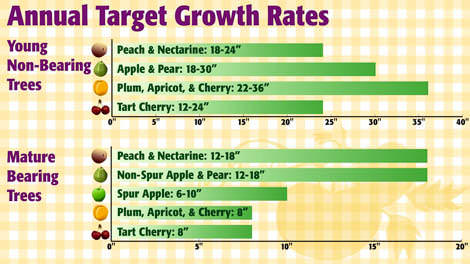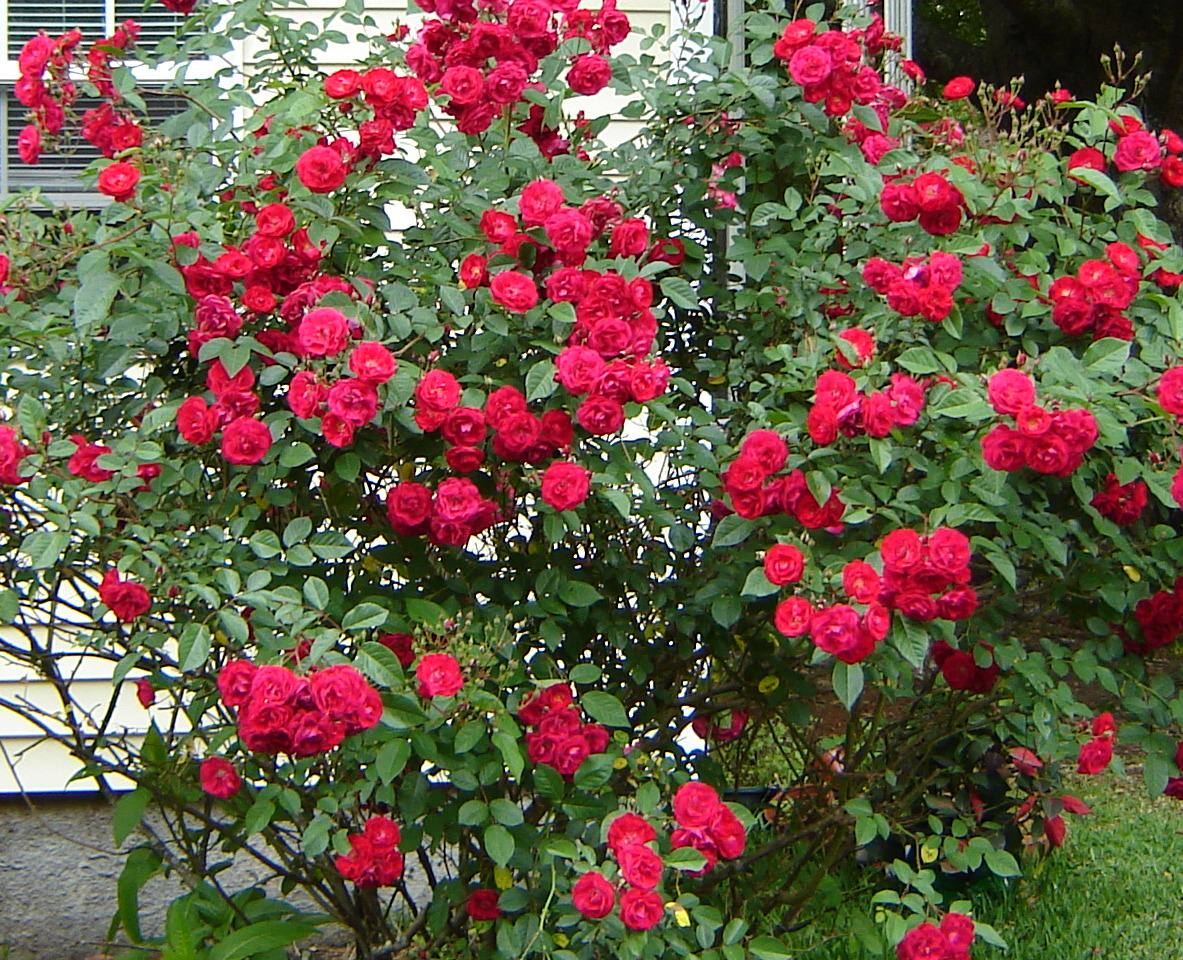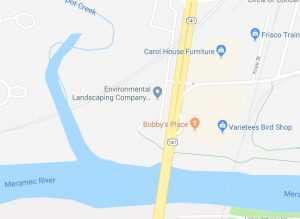St. Louis Companies that Fertilize Fruit Trees – Environmental Landscaping
April St. Louis Landscaping Tips from Environmental Landscaping
There are a number of things that you should be doing right now, before the possibility of heat starting sometime in May. The first is to fertilize your fruit trees.
Right before bud break is the perfect time to fertilize. But know if you do happen to miss the moment and the trees have begun to bloom, you can still fertilize until June. You should NOT fertilize in late summer or fall, though, because the new growth put on by the tree can be damaged by frost. The very earliest time to fertilize is one month prior to spring growth.
Measure Fruit Trees to See if They Need Fertilizing
One thing to note, is that not all fruit trees need fertilizer every year, and they don’t need it in the same amounts. Too much fertilizer means lots of leaves and shoots, and not much fruit. Luckily for us, fruit trees are pretty darn good at telling you what they need. If the tree was pruned more than it typically is pruned in one year, don’t fertilize.
Beyond that, you can begin your assessment of a tree by locating last year’s growth rings. The “growth ring” is the point on the branch where the tree started growing the previous year. Measure from the growth ring all the way out to the end of the branch. Repeat these measurements at several spots around the tree, and average them as the previous year’s “annual growth” of the tree.
Here is a chart and the corresponding data you can use to evaluate your tree’s annual growth. If the tree’s number is at the low end of growth, then you should fertilize the tree this year.
* Non-bearing peaches and nectarines should grow 18”-24”.
* Bearing peaches and nectarines should grow 12”-18”.
* Non-bearing apples and pears should grow 18”-30”.
* Bearing pears and bearing non-spur type apples should grow 12”-18”.
* Bearing spur apples should grow 6”-10”.
* Non-bearing plums and sweet cherries should grow 22”-36”.
* Bearing plums and sweet cherries should grow 8”.
* Non-bearing, tart cherries should grow 12”-24”.
* Bearing tart cherries should grow 8”.
How to apply fertilizer to fruit trees
There are two ways to apply fertilizer to your trees. The easiest way is just to spread the fertilizer on the ground, rake it in, and then water. But be sure not to start fertilizing next to the trunk. Start a foot away and spread fertilizer evenly all the way out to the drip line. The “drip line” is at the perimeter of the tree’s furthest reaching branches.
Digging a series of small holes is another method of applying fertilizer. It is a bit more work, but it ensures the fertilizer is getting to the tree roots. To make the digging job easy you can use an auger with a cordless drill. Dig the holes about six inches down, and a foot or a bit more apart. Start drilling the holes a foot outward from the trunk and continue on to the drip line.
Take the fertilizer you’ve measured out according to the recommended rates and sprinkle a little in each hole until it is used up. This is great for making sure less water soluble nutrients like phosphorus or beneficial mychorhizae in the fertilizer make it to the tree roots. Once you have finished fertilizing, spread an inch over the top and water well.
Time to Fertilize Roses, Too
Roses are heavy feeders and require much fertilizer, but supplied with a varied nutritional diet, they will provide an abundance of beautiful, large blooms. After the first spring bloom, you’ll be reminded that the reward for these gorgeous blooms is well worth the effort you expend.
There are differences between new roses and established ones, which requite differing routines. For freshly planted bare-root plants, you must take care to protect these tiny new roots from burning. Apply just organic amendments to the soil when it comes to planting time, then wait until after the bush has produced its first blooms to add any chemical fertilizers. By the time this has occurred you can be sure the roots are large enough to withstand chemicals, without this burning taking place.
The chemical fertilizer mentioned is what established plants need. You should water the plant well first, then apply the fertilizer and water well once again. You may now begin a regular feeding program, but take a little extra caution – use weaker strength fertilizers on a more frequent basis for a safe, adequate food supply.
Another topic of quick note. We’ve talked about lawn fertilizing in St. Louis, in previous posts as well, and this is the time to complete the process as well.
Prune Flowering Shrubs
This is something you should do immediately after flowers die. You may be starting at your six-foot tall shrub, and think back to the plant label that said, “Grows to three feet.” In rich soils plants may greatly exceed their usual height. Regular pruning can correct many problems. Pruning can promote new plant growth, maintain plant size, encourage flowering, remove diseased or dead limbs and help control insect and disease problems.
However, timing is important, especially when pruning spring blooming shrubs. Early blooming shrubs develop their flower buds during the summer and fall of the previous year. This is often called “blooming on old wood.” Therefore as a general rule, shrubs that flower before June 15 should be pruned soon after flowering. Pruning these shrubs in late summer, fall or early spring will remove the flower buds and therefore the flowers.
Spring flowering shrubs are generally pruned by the renewal method. Each spring after flowering, prune out the largest stems to the ground to stimulate new growth from the crown and remaining stems. Remaining stems can then be shortened to shape.
Shrubs that should be pruned this spring soon after flowering include lilac, deutzia, kerria, mockorange, weigela, forsythia, viburnum, St. johnswort and redtwig and yellowtwig dogwood.
Weed Control and Seeding
Selectively apply broadleaf weed control to weeds in lawn areas such as dandelions. Remember in our previous posts when talked about weed control and pre-emergent in relationship to grass seed. You cannot use both strong weed killer and seeds both in the same area at the same time, and you should begin with the weed control product before the seeding one. There is a waiting period that each product produces that lets you know when you can safely lay down seeds after the weed control/pre-emergent is applied. One of the best options if available to you is to use your broadleaf control product on the areas of your lawn that are already well-established, and then seed the areas which have some bare spots.
Environmental is one of the top landscape companies in Brentwood, University City, Olivette and the St. Louis West End, and every other metro areas in between! We specialize in every neighborhood in the entire St. Louis metro area, as well as in the Illinois East side and into Jefferson County and elsewhere. Have a questions about our service area? Give us a call at (636) 225-3848 or contact us online! We can usually find a way to get to you on just about any project you may have there too!
Tory Catanzaro, Owner – Environmental Landscaping










